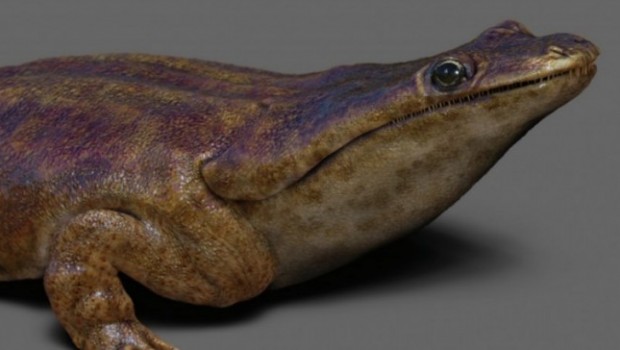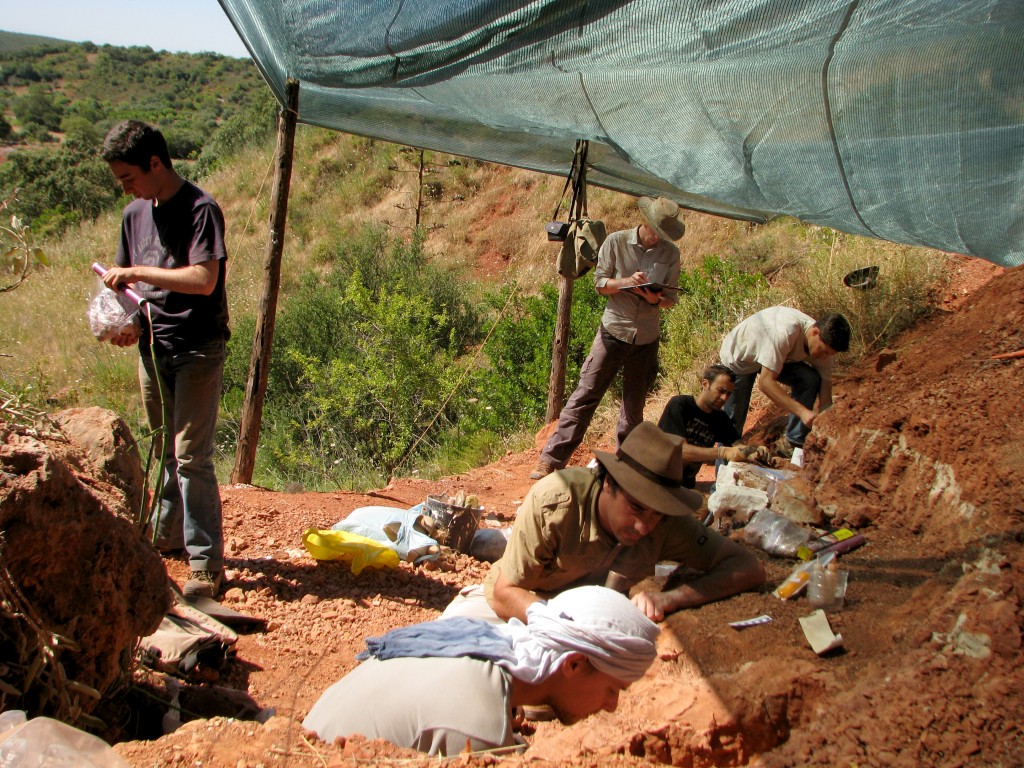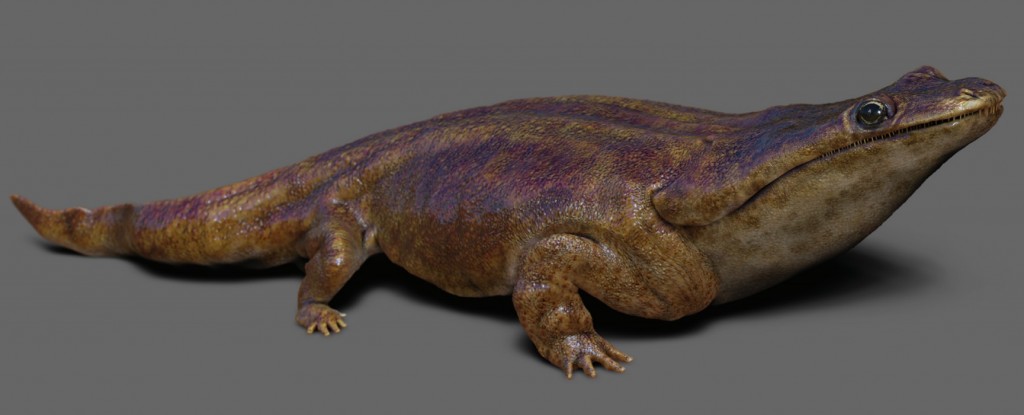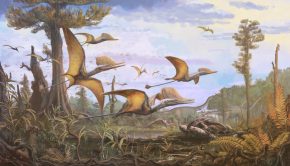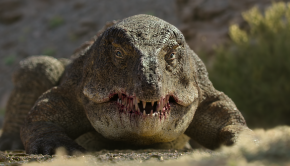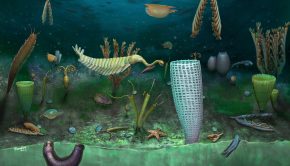A new giant predatory amphibian from the Triassic
Steve Brusatte, who we interviewed in Episode 37, is part of a team who have discovered a new species of temnospondyl (relatives of modern amphibians) that lived in rivers and lakes during the Triassic. It is thought this animal, which could grow up to 3m long, had a similar lifestyle to today’s crocodiles. It would have been a huge fish eating predator, unlike modern amphibians such as frogs and salamanders, which are comparatively tiny and prey mainly on insects.
Steve had this to tell us about the discovery: “The giant amphibian Metoposaurus algarvensis is a new species of temnospondyl that lived during the Late Triassic (approximately 220-230 million years ago) in southern Portugal. It was about three meters long, likely weighed as much as a human, and had a big skull with hundreds of sharp teeth. It was a fish-eater living in rivers and lakes during a period of time when the supercontinent Pangaea was starting to break up, temperatures were hot, and the earliest dinosaurs and stem mammals were diversifying. Fossils of the new species were discovered in a large bonebed in the Algarve, where tens and maybe hundreds of individuals are preserved together. The fossils were found and described by an international team, including Steve Brusatte (Univ of Edinburgh), Richard Butler (Univ of Birmingham), Octavio Mateus (Universidade Nova de Lisboa, Lisbon Portugal) and Seb Steyer (MNHN, Paris, France). The team has been working together in Portugal since 2009 and also includes many students and volunteers.”

